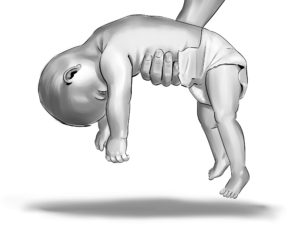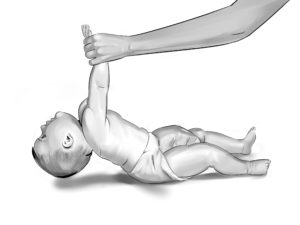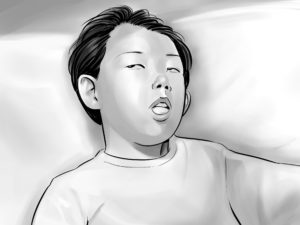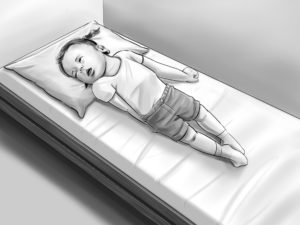
Signs and symptoms of AADC deficiency
Why do I need to know the signs and symptoms of AADC deficiency?
If your child has floppiness (low muscle tone) that is unexplained and not improving, there are other symptoms you can look for to help you decide if you should talk with your child’s doctor about aromatic L-amino acid decarboxylase (AADC) deficiency. Sometimes, other more common conditions can have symptoms that look the same as AADC deficiency, such as cerebral palsy or epilepsy.
Find out more about other conditions with similar signs and symptoms of AADC deficiencyWhat are the signs and symptoms of AADC deficiency?
Symptoms of AADC deficiency usually appear in early infancy. There are a range of different signs and symptoms, and severity will vary from person to person.
Floppiness (also known as low muscle tone or hypotonia)
- Low muscle tone is the most common symptom


Delays in development
- Throughout the first 2 years of a child’s life, they should reach key developmental milestones, such as sitting without support, crawling or walking
- While children progress at different rates, a delay in reaching milestones is a sign that a child may have AADC deficiency
Key developmental milestones

Oculogyric crises; spasmodic movements of the eyeballs into a fixed position, usually upwards
- Oculogyric crises are episodes of sudden, involuntary, irregular eye movements
- During these episodes a child’s eyes will suddenly roll upwards, without control
- Each episode can last anywhere between a few seconds to several hours and happen numerous times a day or on different days throughout the week
- When a child has an oculogyric crisis, it can look like they are having a seizure
- During an oculogyric crisis, a child may also experience:
- Tongue thrusting and jaw spasms
- Overextending their back and neck when cradled in someone’s arms so that it feels like they are pushing away from you (known as hyperextension)
- Contracting muscles or twisting involuntarily


Do keep in mind that not all oculogyric crisis episodes may look the same
Movement problems
- People with AADC deficiency may also have:
- Involuntary muscle contractions (also known as dystonia)
- Too little movement or smaller movements than would be expected (also known as hypokinesia)
- Other involuntary movements, such as sudden jerking, flailing or twisting
Problems with bodily functions (also known as autonomic dysfunction)
- Problems with bodily functions (also known as autonomic dysfunction):
- Excessive sweating
- Drooling
- Drooping eyelids
Other signs and symptoms
- These may include:
- Seizures
- Sleeping problems
- Irritability
- Excessive crying
- Problems with digestion including diarrhoea, constipation or reflux
- Problems with feeding
- Symptoms that become worse or more noticeable later in the day and improve with sleep (also known as diurnal variation)
- Download a symptom questionnaire that will help you discuss your child’s condition with their doctor
- Watch one family’s experience of living with AADC deficiency
GL-AADC-0980 | February 2022